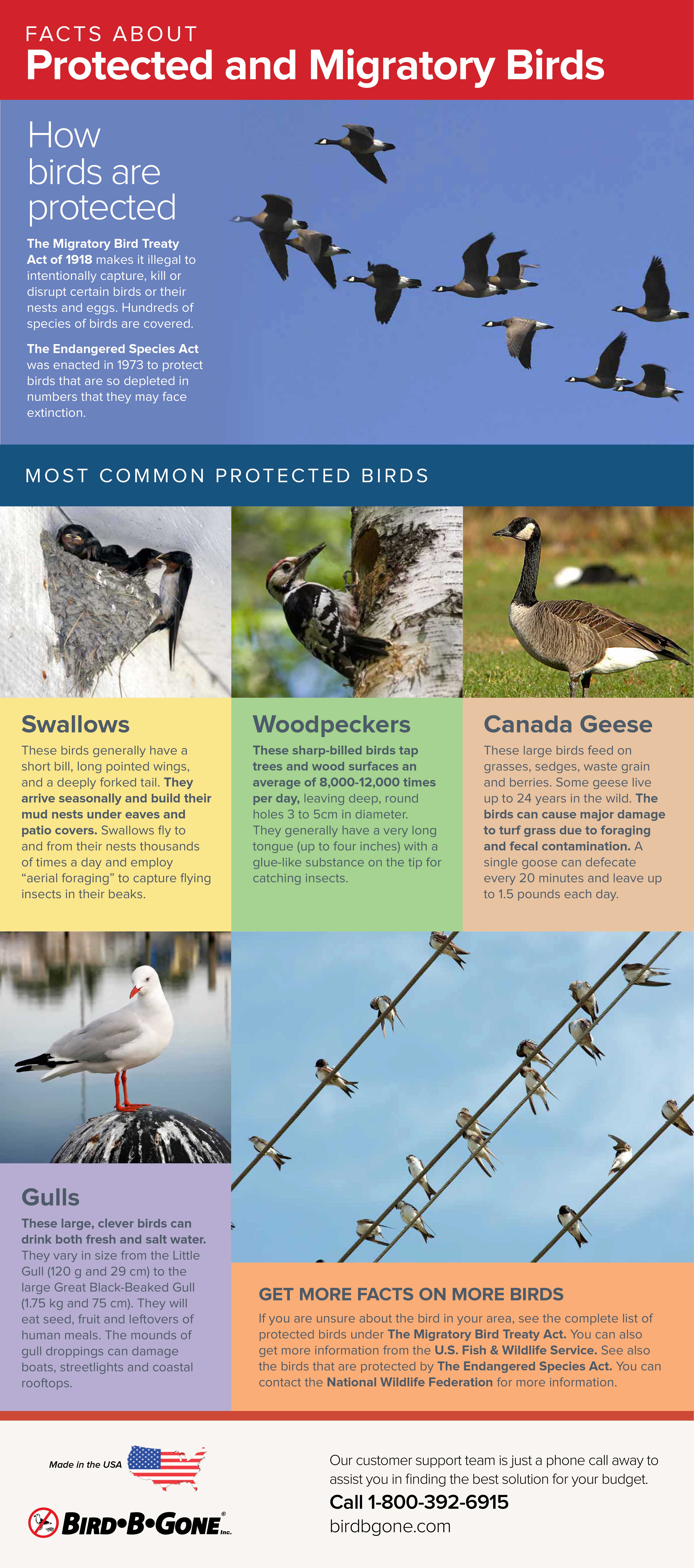Please add the schema tags below
Get the Scoop on Migratory Birds - Infographic
How Birds Are Protected
- The Migratory Bird Treaty Act of 1918 makes it illegal to intentionally capture, kill or disrupt certain birds or their nests and eggs. The MBTA was enacted to protect many migratory bird species that are valued as a source of food or for their ability to eat harmful insects. Hundreds of species of birds are covered.
- The Endangered Species Act was enacted in 1973 to protect birds that are so depleted in numbers that they may face extinction. Its goal is to preserve a species' esthetic, ecological, educational, historical, recreational, and scientific value to the Nation and its people.
Most Common Protected Birds
- Swallows. These birds generally have a short bill, long pointed wings, and a deeply forked tail. They arrive seasonally and build their mud nests under eaves and patio covers. Swallows fly to and from their nests thousands of times a day and employ “aerial foraging” to capture flying insects in their beaks.
- Woodpeckers. These sharp-billed birds tap trees and wood surfaces an average of 8,000-12,000 times per day, leaving deep, round holes 3 to 5cm in diameter. They generally have a very long tongue (up to four inches) with a glue-like substance on the tip for catching insects. They also have bristle-like feathers over their nostrils to keep wood particles from being inhaled.
- Canada Geese. These large birds feed on grasses, sedges, waste grain and berries. They can see more than 180 degrees horizontally and vertically, and they can travel more than 1,000 kilometers a day while migrating. Some geese live up to 24 years in the wild. The birds can cause major damage to turf grass due to foraging and fecal contamination. A single goose can defecate every 20 minutes and leave up to 1.5 pounds each day.
- Gulls. These large, clever birds can drink both fresh and salt water. They vary in size from the Little Gull (120 g and 29 cm) to the large Great Black-Beaked Gull (1.75 kg and 75 cm). They will eat seed, fruit and leftovers of human meals. The mounds of gull droppings can damage boats, streetlights and coastal rooftops. The bacteria, fungal agents and ectoparasites found in gull droppings can carry such diseases as histoplasmosis, encephalitis, salmonella and meningitis.

Get More Facts on More Birds
If you are unsure about migratory birds in your area, see the complete list of protected birds under The Migratory Bird Treaty Act. You can also get more information from the U.S. Fish & Wildlife Service. See also the birds that are protected by The Endangered Species Act. You can contact the National Wildlife Federation for more information.
